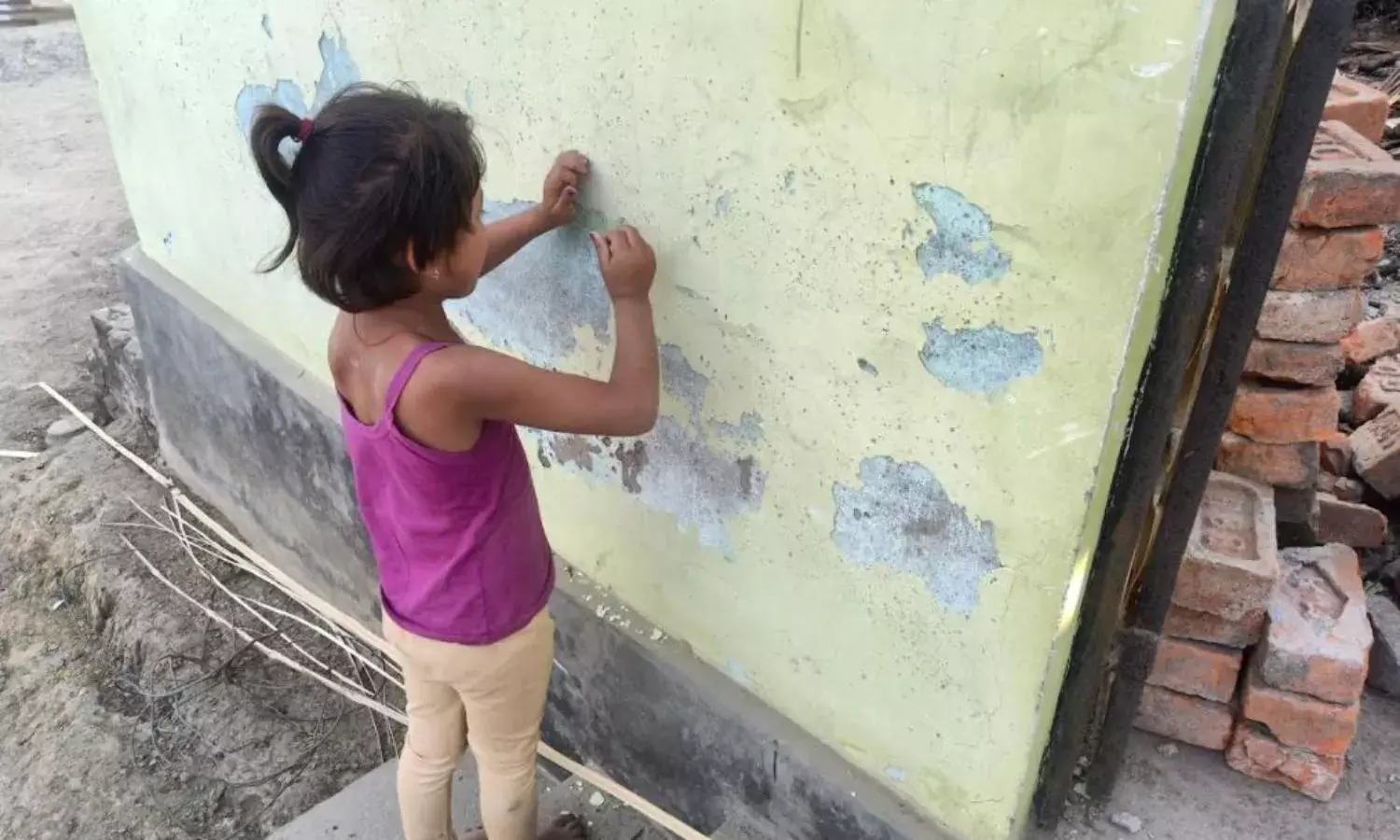A Doused Fire That Still Haunts
Baghjan Oil Field Fire 2020 took nearly five months to control

The Baghjan Fire of 2020 took nearly five months to control, becoming India's longest-burning one, it displaced 1,610 households, generated a loss of 25,000 crore, and destroyed more than 55 percent of the area's biodiversity. The fire started at the Baghjan Oil Field in Tinsukia district of Assam, on June 9 2020, following a May 27, 2020 blowout. Its after effects are still seen. The Baghjan Gaon, comprises around 317 households. Because of the barren soil and seasonal floods, fishing is the most prevalent activity among the villagers.
Some disasters have long-term consequences, the Baghjan fire impacted not just the villagers who fled their homes in fear of being charred or suffocated. But the soaring flames generated such terrible pollution that locals are unable to breathe properly even now. People who returned saw their burned-out homes, and faced unfulfilled promises of compensation.
Rupani Hazarika (38) a widow with three children, was one of the victims of the fire since her home was just across the street from the oil well number five, where the fire began. Though she and her children escaped, their home was left in ruins as a result of the fire. “We are freezing in the winter and feel extremely hot in the summer. I want my son and daughter to go to school, but I can't afford it right now because we're rebuilding our house on our own," said Hazarika. She used to be a tailor, but her sewing machine was destroyed, and she has been struggling to earn a livelihood since. She dreams that her children will study in a good school one day. Most villagers in this village want their children to study but they can't afford it anymore.
Oil India Limited (OIL) offered a compensation of Rs 25 lakhs and jobs to individuals whose homes were burnt. However many families like Hazarika’s did not receive the compensation. While it would be incorrect to suggest that no one received money, most families did not get the whole amount, while some did not receive anything at all. Jobs however, were not provided as promised. Most villagers were unaware of the amount of money they should have received as compensation.
With pollution levels rising as a result of the fire and subsequent oil leak, fishermen have witnessed a significant decrease in the amount of fish caught. Hathe Hazarika, a fisherman who has been in the profession for over ten years, has never seen such a low catch. He blames the fire, as he continues to clean and drain his damaged boat manually.
The way he catches fish is peaceful yet scary to watch. “Even after the fire was extinguished, the fish we caught smelled awful and was greasy," he recalled. Even in extremely cold weather, fishermen have to work till late at night since the yield is so low. "Previously, we used to make Rs 300-400 per day but now I can barely earn Rs 120 after a good sale," he said
Several reports by Mahendra Kumar Yadava, Addl. PCCF (WIldlife) & Chief WIldlife Warden, Assam, reveal how Maguri Motapung Beel and the Dibru-Saikhowa National Park are homes for fish and birds, yet there has been a reduction in numbers following the Baghjan fire. Eutrophication (excessive plant and algal growth) has resulted after falling PH and oil spill stains, this in turn resulted in a decrease in fish output.
Sabin Hazarika, a fisherman and father of two, says, "I have known how to fish since I was a child, but since the fire, I haven't been able to catch a single fish correctly." His daily earnings, which were previously modest at roughly Rs 300-400, have now reduced to a meagre Rs 40-50 per day.
Most fishermen complained about the increased work hours and no support from the government. The Baghjan fire damaged the boats but the fishermen can’t afford to fix them. They have no option to risk their lives and go fishing in these damaged boats.
Villagers are still haunted by their recollections of the Baghjan fire. The suffocating smoke, the constantly vibrating land, dead fish, dead animals, livestock, and being forced to relocate themselves. The National Green Tribunal describes the Baghjan Blowout as "devastating" for the effects it had on the biodiversity on Baghjan village and nearby Dibru-saikia national park, and listed out precautions that should have been taken before, by OIL.
“The Baghjan gas well blowout temporarily impacted OIL’s daily production. Subsequent to the successful capping of the blowout well, field development activities for the production of oil and gas from Baghjan is being continued and wells are being drilled in the vicinity of Baghjan-5 well. There is no indicative impact of the blowout on the reservoir,” OIL had responded in a query raised by the Business Standard.
Baghjan village was a quiet, sustainable settlement where women sewed their own clothes, and farmed food for their own needs. However now, those who already lived below the poverty line, have been forced by man made disasters like such fires, deeper into an unending crisis.
All Photographs Dristi Sharma



